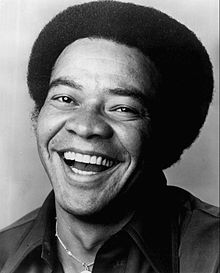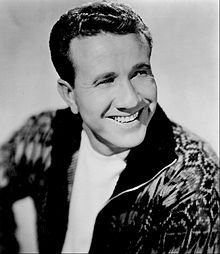ripshade20
Uploaded on May 21, 2010
Best version. One of the Great love songs.
William Harrison "Bill" Withers, Jr. (born July 4, 1938) is an American singer-songwriter and musician who performed and recorded from 1970 until 1985. He recorded a number of hits such as "Lean on Me", "Ain't No Sunshine", "Use Me", "Just the Two of Us", "Lovely Day", and "Grandma's Hands". His life was the subject of the 2009 documentary film Still Bill.
| Bill Withers | |
|---|---|
 Withers in 1976. |
|
| Background information | |
| Birth name | William Harrison Withers, Jr. |
| Born | July 4, 1938 Slab Fork, West Virginia, U.S. |
| Origin | Los Angeles, California, U.S. |
| Genres | Soul, smooth soul, R&B, blues |
| Occupations | Singer-songwriter, musician |
| Instruments | Vocals, guitar, keyboards |
| Years active | 1967–1985 |
| Labels | Sussex Records Columbia Records |
| Website | billwithersmusic.com |
Early life
Withers was born the youngest of six children in the small coal-mining town of Slab Fork, West Virginia. Raised in nearby Beckley, West Virginia, Withers was twelve years old when his father died. He enlisted with the United States Navy at age eighteen and served for nine years, during which time he became interested in singing and writing songs. Soon after his discharge from the Navy in 1965, he relocated to Los Angeles in 1967 for a musical career.[1]Withers worked as an assembler for several different companies, including Douglas Aircraft Corporation, while recording demo tapes with his own money, shopping them around and performing in clubs at night. When he debuted with the song "Ain't No Sunshine" he refused to resign his job because of his belief that the music business was a fickle industry and that he was still a novice compared to other acts.
Career
Sussex Records
During early 1970, Withers' demonstration tape was audited favorably by Clarence Avant of Sussex Records. Avant signed Withers to a record deal and assigned Booker T. Jones to produce Withers' first album.Four three-hour studio sessions were planned to record the album, but funding caused the album to be recorded in three sessions with a six-month break between the second and final sessions. Just as I Am was released in 1971 with the tracks "Ain't No Sunshine" and "Grandma's Hands" as singles. The album features Stephen Stills playing lead guitar.[2]
The album was a success and Withers began touring with a band assembled from members of The Watts 103rd Street Rhythm Band: drummer James Gadson, guitarist Benorce Blackmon, keyboardist Ray Jackson, and bassist Melvin Dunlap.
At the 14th annual Grammy Awards on Tuesday, March 14, 1972, Withers won a Grammy Award for Best R&B Song for "Ain't No Sunshine." The track had already sold over one million copies, and was awarded a platinum disc by the R.I.A.A. in September 1971.[3]
During a hiatus from touring, Withers recorded his second album, Still Bill. The single "Lean on Me" went to number one the week of July 8, 1972. It was Withers' second gold disc awarded track with confirmed sales in excess of three million.[3]
His single "Use Me" released in August 1972, became his third million seller, with the R.I.A.A. gold disc award taking place on October 12, 1972.[3] His performance at Carnegie Hall on October 6 1972 was recorded, and released as the live album Bill Withers, Live at Carnegie Hall on November 30 1972. In 1974 Withers recorded the album +'Justments. Due to a legal dispute with the Sussex company, Withers was unable to record for some time thereafter.
During this time, he wrote and produced two songs on the Gladys Knight & the Pips record I Feel a Song, and in October 1974 performed in concert together with James Brown, Etta James, and B. B. King four weeks prior to the historic Rumble in the Jungle fight between Foreman and Ali in Zaire.[4]
Footage of his performance was included in the 1996 documentary film, When We Were Kings, and he is heard on the accompanying soundtrack. Other footage of his performance is included in the 2008 documentary film Soul Power which is based on archival footage of the 1974 Zaire concert.
Source: Wikipedia
TTFN
CYA Later Taters
Thanks For Watching.
Donnie/ Sinbad the Sailor Man



